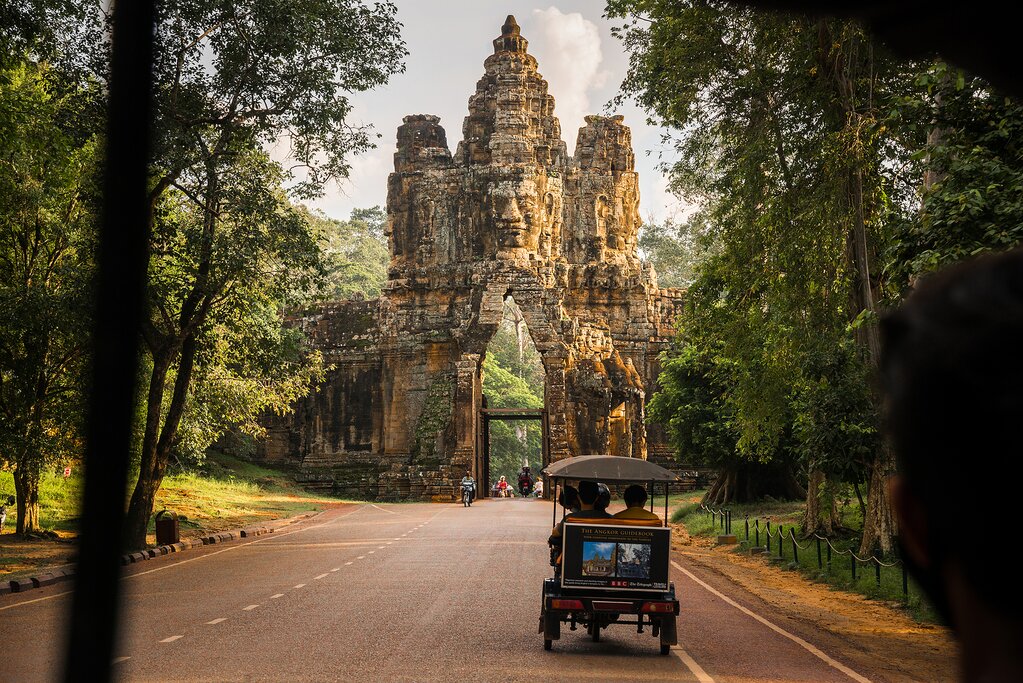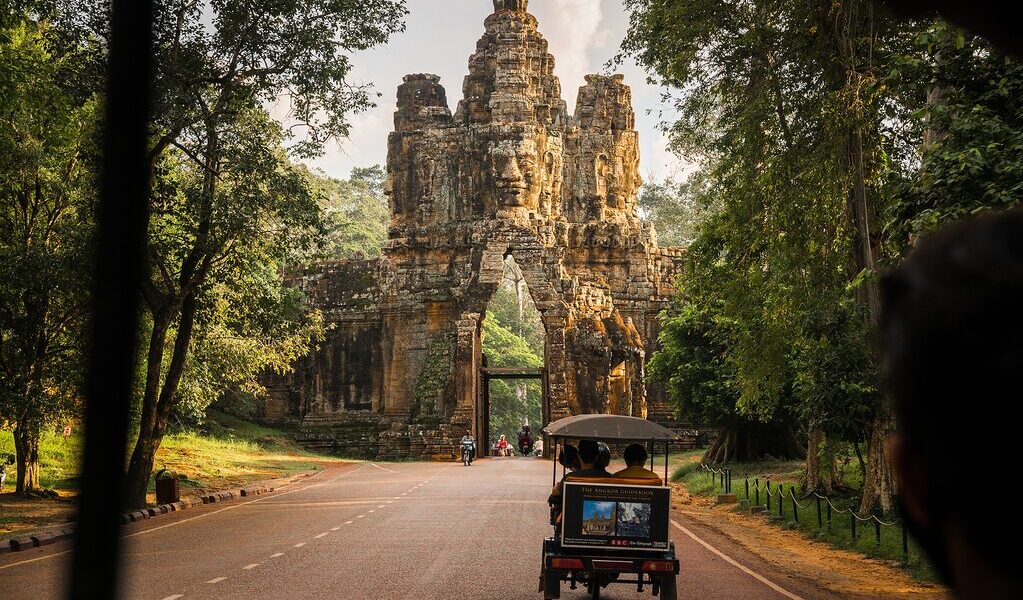
Cambodia experiences two main seasons: the dry season and the rainy (wet) season. Most travelers prefer to visit during the dry season when the skies are clearer, temperatures are generally lower, and the conditions are good for sightseeing and experiences. However, there are advantages to visiting in the wet season, especially if you’re interested in photography and don’t mind getting a bit wet. Find out more about the best time of year to visit Cambodia.
## A Comprehensive Guide to Seasonal Travel Planning in Cambodia
Cambodia, a land of ancient wonders and vibrant culture, is a tropical nation characterized by two distinct seasons: the dry season and the wet season. Understanding these seasons is paramount to planning a fulfilling and enjoyable trip. The dry season graces Cambodia from November to May, while the wet season extends from June to October. However, within these broader classifications, nuanced variations exist, influencing the overall travel experience.
The months of December, January, and February typically represent the coolest period, boasting an average high temperature of a comfortable 79°F (26°C). As the dry season progresses, temperatures tend to gently ascend, potentially making strenuous outdoor activities slightly more challenging. However, this increase in temperature poses no obstacle to those seeking relaxation on Cambodia’s beautiful beaches. Conversely, the wet season, while characterized by rainfall, rarely witnesses continuous downpours throughout the entire day. The intensity and frequency of rainfall tend to peak later in the season.
Careful consideration of your desired activities and experiences is crucial when planning a trip to Cambodia. The prevailing weather conditions can significantly impact your overall enjoyment and the feasibility of certain itineraries. Generally, the dry season emerges as the most favorable time to explore Cambodia. During this period, roads across the country are more easily navigable, facilitating seamless travel between destinations. Furthermore, the weather conditions are conducive to outdoor sightseeing adventures, and the beaches beckon with their irresistible allure.
However, it’s important to remember that even if your travel schedule dictates a visit during the wet season, there are unique advantages to be gained. Popular historical sites, such as the awe-inspiring ancient city of **Angkor** and the iconic **Angkor Wat**, experience significantly fewer crowds compared to the bustling dry season. This can afford you a more intimate and immersive experience, potentially granting you moments of solitary contemplation amidst the majestic temples. Moreover, the rain doesn’t typically fall incessantly, so with careful planning and a trusty umbrella, you can comfortably explore the sights without fear of becoming completely soaked.
| Seasons | Pros | Cons | Best for | Where to Visit |
| ————- | ———————————————————————————————————- | —————————————————————————————- | ————————————————————————————————————————————- | ————————————————————————————————————————————————– |
| **Dry (Nov-May)** | Clear skies, pleasant temperatures | Large tourist crowds at Angkor, relatively higher prices (although still generally affordable) | Outdoor pursuits, comprehensive sightseeing, leisurely lake and river excursions (particularly earlier in the season), relaxing beach vacations | **Angkor** / **Siem Reap**, islands off the coast of **Sihanoukville**, the verdant **Cardamom Mountains** |
| **Wet (Jun-Oct)** | Fewer tourists, enhanced photographic opportunities, replenished lakes and rivers teeming with birdlife | Daily rainfall, potential for mud, landslides, and impassable roads, increased humidity | Sightseeing at **Angkor** without the crowds, exploring the cityscapes and museums of **Phnom Penh** | **Angkor** / **Siem Reap**, **Phnom Penh**, **Tonlé Sap** |
## Unveiling the Charms of the Dry Season in Cambodia (November to May)
The dry season reigns supreme as the peak travel season in Cambodia. The months of December and January are particularly popular, drawing a multitude of travelers from Europe and North America seeking to escape the harsh grip of winter and indulge in a well-deserved vacation. As the dry season progresses towards its conclusion, it transitions into a shoulder season, marked by gradual increases in both temperature and rainfall.
During the height of the dry season, Cambodia’s most iconic attractions, most notably **Angkor Wat**, can experience significant crowding. However, the prevailing dry conditions provide an ideal setting for exploring this ancient city, whether on foot or by bicycle. It is important to remember that the **Angkor** complex spans a vast area, extending far beyond the central **Angkor Wat** temple. Venturing further afield will lead you to less crowded areas, allowing for a more serene experience. If you plan to visit during the dry season, especially in December and January, it is highly recommended that you book your accommodation in the nearby town of **Siem Reap** well in advance. This precaution also applies to other popular destinations throughout the country, including **Battambang**, **Kampot**, **Phnom Penh**, and the various coastal beach resorts.
The beaches of Cambodia hold a special allure during the dry season. The sea shimmers with crystal-clear visibility, the sands gleam with pristine whiteness, and the skies remain unblemished by clouds. While the beaches closest to **Sihanoukville** on the mainland have undergone considerable development, a collection of offshore islands offers a more tranquil and laid-back experience. These islands cater to a wide range of budgets, providing accommodation options to suit every traveler’s needs. **Koh Rong**, **Koh Rong Samloem**, **Koh Ta Kiev**, and **Koh Russey** (also known as Bamboo Island) are among the most idyllic and sought-after island destinations.
As temperatures rise later in the dry season, consider seeking refuge in the higher elevations of the **Cardamom Mountains** in western Cambodia. These mountains provide a welcome respite from the heat. The **Cardamom Mountains** are blanketed in dense rainforests and are home to several wildlife sanctuaries, including the **Phnum Samkos Wildlife Sanctuary**. This sanctuary serves as a haven for a diverse array of wildlife, including monkeys, pangolins, and various water birds. In addition, the region is inhabited by indigenous tribal communities, adding to the rich cultural tapestry of the area. Visitors to the **Cardamom Mountains** can enjoy a variety of activities, such as scenic boat rides along the **Tatai River**, invigorating hikes through the lush rainforests, and unique stays in safari-style accommodations.
While prices may generally be higher during the dry season, it is important to remember that Cambodia remains an affordable destination throughout the year. Many locally owned hotels and guesthouses continue to offer excellent value for money, even during the peak season.
### Significant Events During the Dry Season
* **Liberation Day, nationwide:** Celebrated on January 7th, Liberation Day commemorates the fall of the Khmer Rouge regime in 1979 and serves as a solemn tribute to the lives lost during their devastating rule over Cambodia. This day is a public holiday, and many businesses will be closed.
* **Lunar New Year, nationwide:** Cambodians with Chinese or Vietnamese ancestry observe Lunar New Year in late January or early February. Families gather together to share meals, engage in traditional games, and celebrate their cultural heritage. While not an official public holiday in Cambodia, the Lunar New Year is a significant cultural event.
* **Khmer New Year, nationwide:** Spanning four days in mid-April, Khmer New Year stands as Cambodia’s most significant celebration. Expect quieter city streets, lively festivities in smaller towns, business closures, and heightened activity within transport networks as people travel to celebrate with their families.
* **International Workers’ Day, nationwide:** Celebrated on May 1st, International Workers’ Day is a public holiday in Cambodia, and many businesses will be closed.
* **King’s Birthday, nationwide:** The current King of Cambodia, Norodom Sihamoni, was born on May 14th. This day is a public holiday, and many businesses will be closed.
* **Visak Bochea Day, nationwide:** As a predominantly Buddhist nation, Cambodia observes Visak Bochea Day, a holiday commemorating the birth, death, and enlightenment of the Buddha. Locals visit temples, light candles, and make offerings. The date of this holiday shifts each year as it is tied to the full moon of the sixth month of the Buddhist lunar calendar.
* **Royal Plowing Ceremony, Phnom Penh:** Held in late May, the Royal Plowing Ceremony marks the start of the rainy season and the time for plowing the fields. Sacred cows symbolically plow a furrow outside the Royal Palace in the capital city.
## Embracing the Wet Season in Cambodia (June to October)
The wet season in Cambodia is considered the low season for tourism, but this doesn’t necessarily translate to an unfavorable time to visit. The suitability of the wet season depends largely on your individual preferences and priorities. One of the primary advantages of traveling during this period is the reduced number of tourists at **Angkor** and other popular destinations. If you prefer to avoid crowds and seek a more tranquil experience, the wet season could be an excellent choice.
The early part of the wet season offers the optimal window for visiting Cambodia’s unique floating villages. These fascinating communities seemingly disappear when water levels are too low. Along the **Mekong** and **Tonlé Sap** rivers, as well as around **Lake Tonlé Sap**, homes and shops are constructed on towering stilts, creating a mesmerizing sight. Embark on a covered boat cruise, and then transfer to a smaller paddle boat or canoe for an up-close exploration of the villages and their floating markets. **Ondong Rossey** and **Kompong Luong** are particularly picturesque villages to visit along the route between **Phnom Penh** and **Battambang**.
Navigating Cambodia can be challenging during the wet season due to flooding and road washouts caused by heavy rains, particularly in rural areas. To avoid potentially long and delayed overland journeys between **Siem Reap** and **Phnom Penh**, consider taking a water bus across **Tonlé Sap** Lake and down the **Tonlé Sap** River. This service is not operational during periods of low water levels, but it presents an appealing alternative during the wet season. It offers a unique opportunity to witness the daily life of rural communities along the waterways.
The wet season also provides an ideal opportunity to explore the attractions of the capital city, **Phnom Penh**. The city offers a wealth of indoor activities to enjoy during inclement weather, including visits to the **Royal Palace**, the **National Museum of Cambodia**, and shopping excursions at the **Art Deco Central Market**. In addition, the city boasts a wide array of excellent restaurants. When the weather permits, stroll along the waterfront and soak in the scenic views. With regard to costs, you might find some attractive off-season specials at higher-end hotels, particularly around **Siem Reap**. However, it’s generally advisable to avoid booking a stay at a beach resort during the wet season due to unfavorable sea and weather conditions.
### Notable Events During the Wet Season
* **King’s Mother’s Birthday, nationwide:** Queen Mother Norodom Monineath, the mother of the King, celebrates her birthday on June 18th. The entire nation joins in the celebration. As a public holiday in Cambodia, expect business closures.
* **Bonn Pchum Ben, nationwide:** This significant religious festival takes place in late September or early October. During Bonn Pchum Ben, Cambodians make offerings to monks and the spirits of their ancestors in order to accumulate good karma. If you visit a temple during this period, observe the offerings of food, fruit, flowers, and money.
* **Constitutional Day, nationwide:** Constitutional Day, a public holiday observed on September 24th (or the following Monday if it falls on a weekend), commemorates the proclamation of the Cambodian constitution in 1993. Expect some business closures.
* **Coronation Day, Phnom Penh:** The anniversary of the coronation of King Norodom Sihamoni on October 29th is celebrated as a national holiday. The Royal Palace in **Phnom Penh** is illuminated at night in honor of the occasion.
* **Birthday of the King Father, nationwide:** Cambodians observe a national holiday on October 31st to honor the birthday of the previous king and current king’s father, Norodom Sihanouk. Expect some business closures.
B-222

